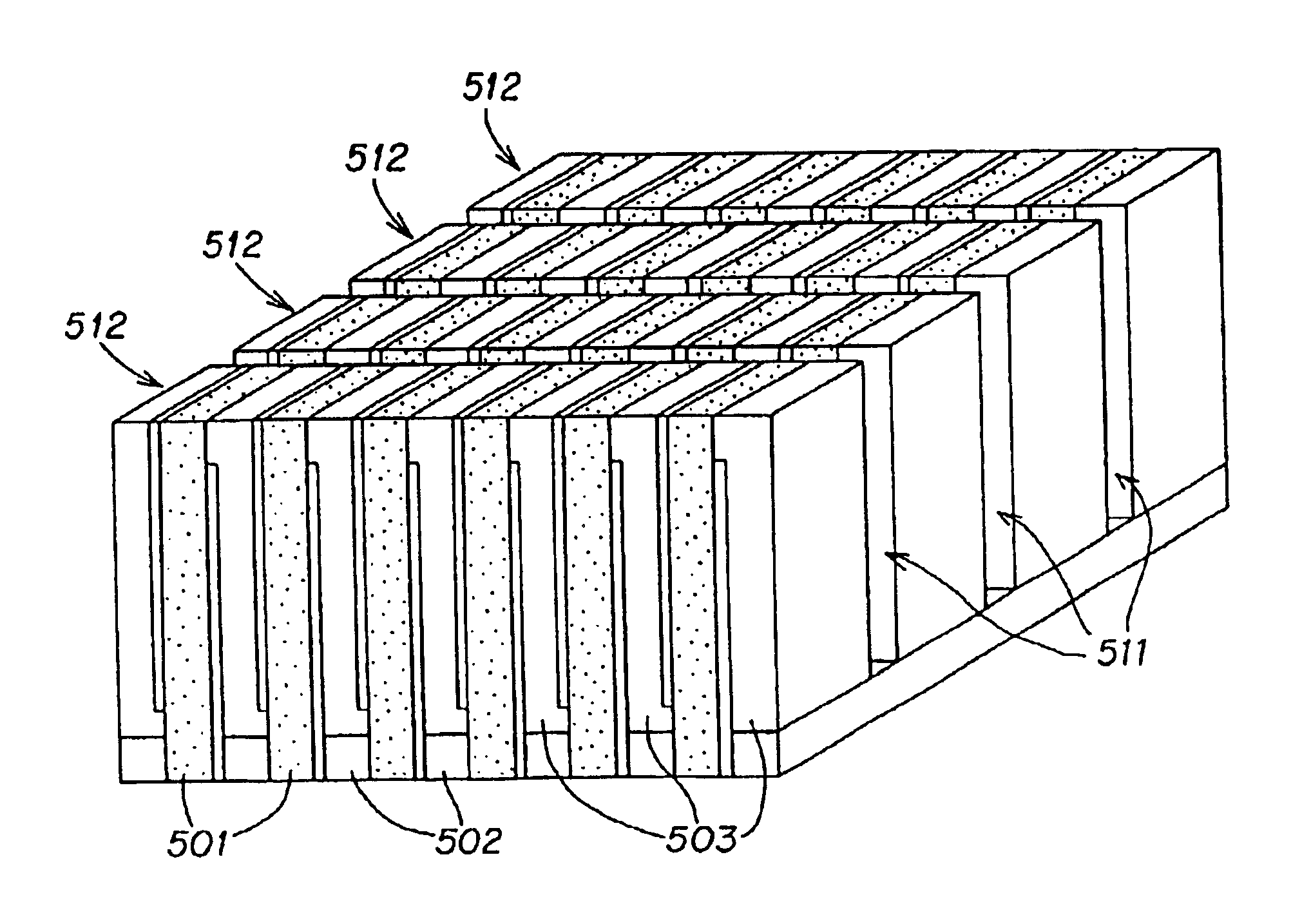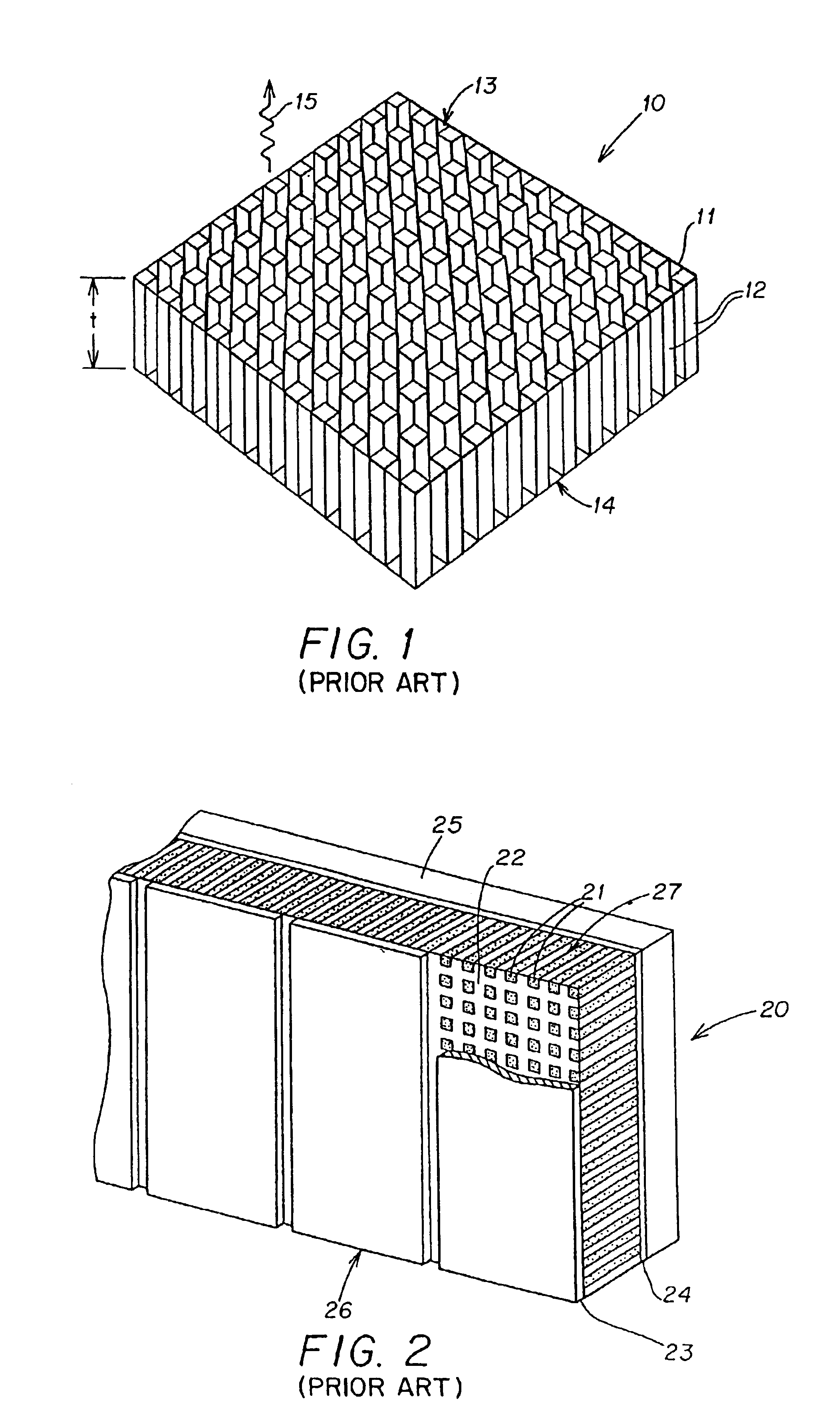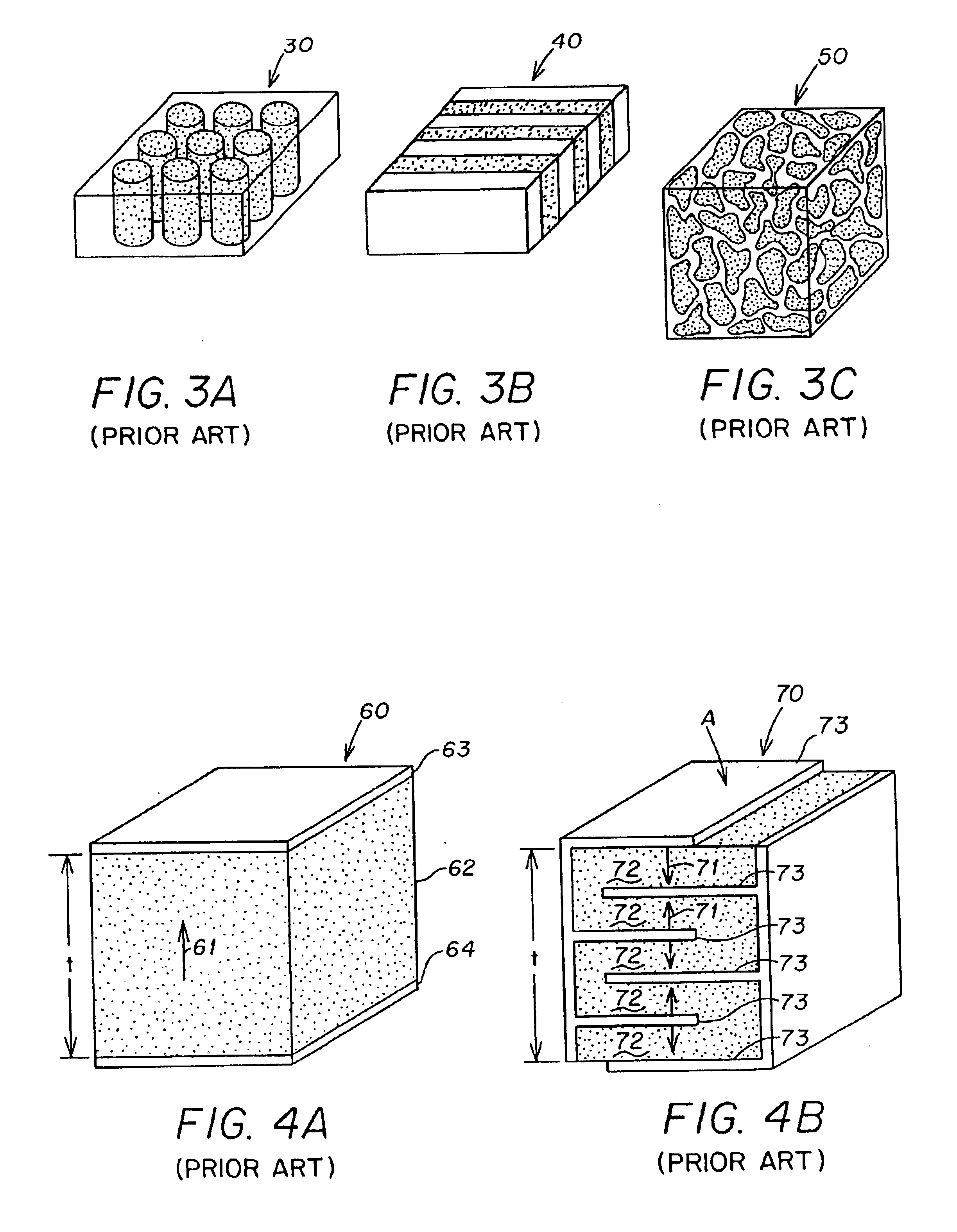Method for making a transducer
a transducer and piezoelectric technology, applied in the field of composite piezoelectric transducer elements, can solve the problems of not solving the problem of acoustic matching, reducing the open-circuit sensitivity, and achieving good electrical impedance match, so as to increase the number of layers, and reduce the open-circuit sensitivity
- Summary
- Abstract
- Description
- Claims
- Application Information
AI Technical Summary
Benefits of technology
Problems solved by technology
Method used
Image
Examples
Embodiment Construction
A block diagram of a phased-array, pulse-echo ultrasound imaging system 100 is shown in FIG. 5A. The system provides a pulsed electrical stimulus to an array of transducers 101, which causes the transducers to transmit an ultrasonic acoustical wave 103. The wave is transmitted into a medium, such as a human body, and eventually, at least partially reflected by an object (e.g., heart 115) in the medium. The reflected wave (the “echo”) is received by the transducers 101, which produce an electrical signal 104 that is indicative of the echo. Various properties of the electrical signal caused by the echo, such as its amplitude and phase, are then analyzed by a signal processing section of the imaging system to determine information about the object, such as its size, location, and velocity. The imaging system may use beam steering, phased array, or other techniques known in the art to stimulate the transducers and to analyze the electrical signal resulting from the echo, see e.g., U.S. ...
PUM
| Property | Measurement | Unit |
|---|---|---|
| electric impedance | aaaaa | aaaaa |
| thickness | aaaaa | aaaaa |
| distance | aaaaa | aaaaa |
Abstract
Description
Claims
Application Information
 Login to View More
Login to View More - R&D
- Intellectual Property
- Life Sciences
- Materials
- Tech Scout
- Unparalleled Data Quality
- Higher Quality Content
- 60% Fewer Hallucinations
Browse by: Latest US Patents, China's latest patents, Technical Efficacy Thesaurus, Application Domain, Technology Topic, Popular Technical Reports.
© 2025 PatSnap. All rights reserved.Legal|Privacy policy|Modern Slavery Act Transparency Statement|Sitemap|About US| Contact US: help@patsnap.com



